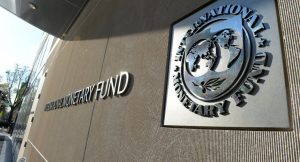The International Monetary Fund (IMF) says it has found out that the gender gap in leadership does make a difference when it comes to bank stability, and that banks with higher shares of women board members had higher capital buffers, a lower proportion of nonperforming loans, and greater resistance to stress.
to stress.
This contained in a blog post entitled “Women in Finance: An Economic Case for Gender Equality” Wednesday, September 19, 20178. The IMF noted that women are underrepresented at all levels of the global financial system, from depositors and borrowers to bank board members and regulators, adding that deeper representation of woman at all levels of financial systems across countries would increase the effectiveness of fiscal and monetary policies within countries and globally.
The authors of the post therefore urged gender equality in the financial services sector for optimal fiscal and monetary policy formulation and execution, adding that “We need more research and better data to explain how to achieve these benefits and to identify the conditions that facilitate the entry of women into leadership roles in banks and supervisory agencies.”
Specifically, the Bretton Woods institution averred that there are four possible reasons why a higher share of women on bank and supervisory boards may contribute to financial stability, including the fact that women may be better risk managers; discriminatory hiring practices may mean that the few women who do make it to the top are better qualified or more experienced than their male counterparts; more women on boards contributes to diversity of thought, which leads to better decisions; and institutions that tend to attract and select women in top positions may be better-managed in the first place.
“Based on evidence in our paper and related literature, we find that the observed higher stability is most likely due to the beneficial effects of greater diversity of views on boards, as well as discriminatory hiring practices that lead to hiring better qualified or more experienced women than men,” the authors noted, adding that their findings strengthen the case for financial inclusion of women to enhance economic growth and foster financial stability.
“Our new study finds that greater inclusion of women as users, providers, and regulators of financial services would have benefits beyond addressing gender inequality. Narrowing the gender gap would foster greater stability in the banking system and enhance economic growth,” the authors said.
Women on average accounted for just 40 percent of bank depositors and borrowers in 2016, according to IMF survey results published this year—the first time such data became available.
Underlying these aggregate figures are large variations across regions and countries. For example, women accounted for 51 percent of borrowers in Brazil, compared with only 8 percent in Pakistan.
The IMF therefore posited that increasing women’s access to and use of financial services can have both economic and societal benefits, noting for example, that in Kenya, women merchants who opened a basic bank account invested more in their businesses just as female-headed households in Nepal spending more on education after opening a savings account.
“We found that women accounted for less than 2 percent of financial institutions’ chief executive officers and less than 20 percent of executive board members. The proportion of women on the boards of banking-supervision agencies was also low—just 17 percent on average in 2015.
The blog post stated that there is considerable regional variation in the presence of women in banking leadership roles, that sub-Saharan African countries had the highest shares of female banking executives, while Latin America and the Caribbean had the lowest. Advanced economies were in the middle.


